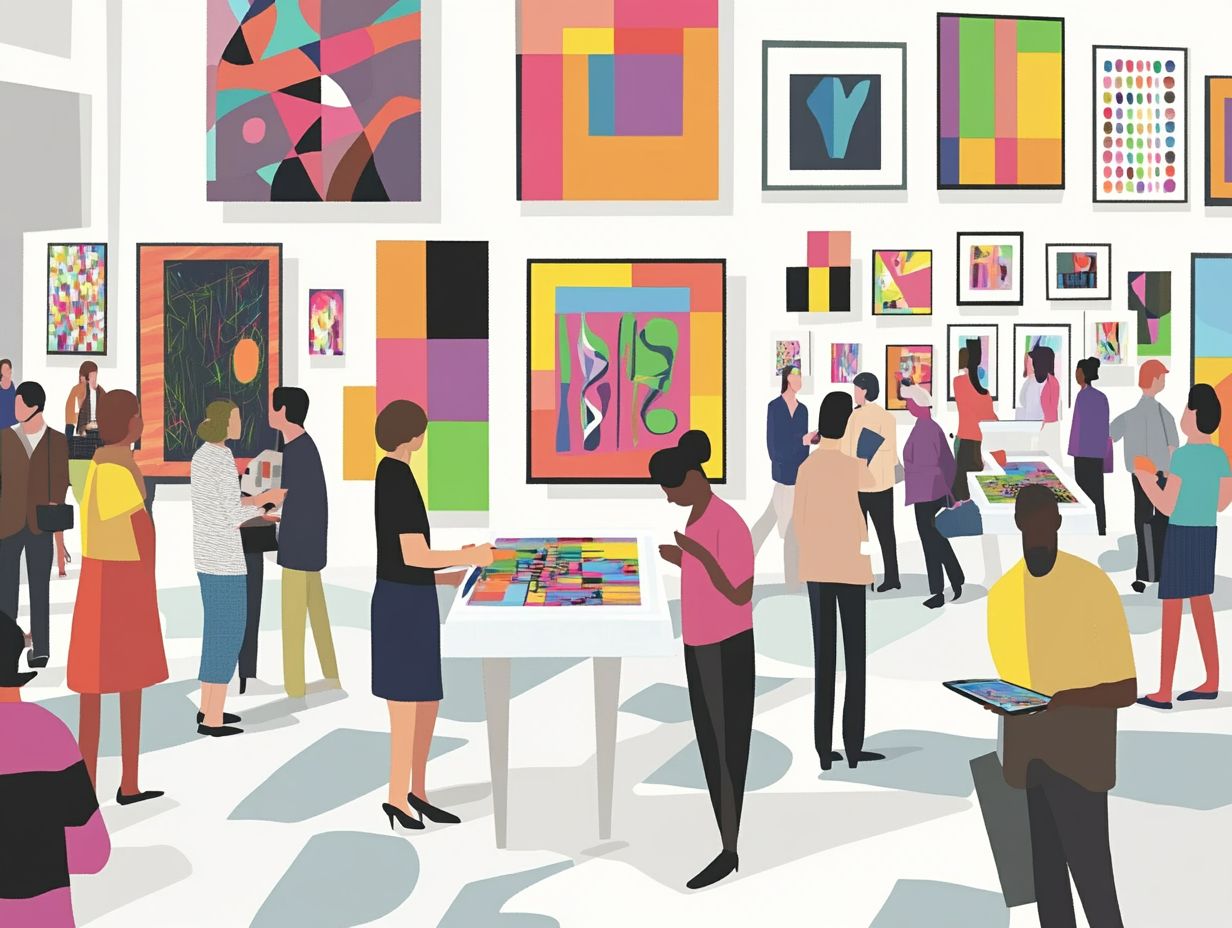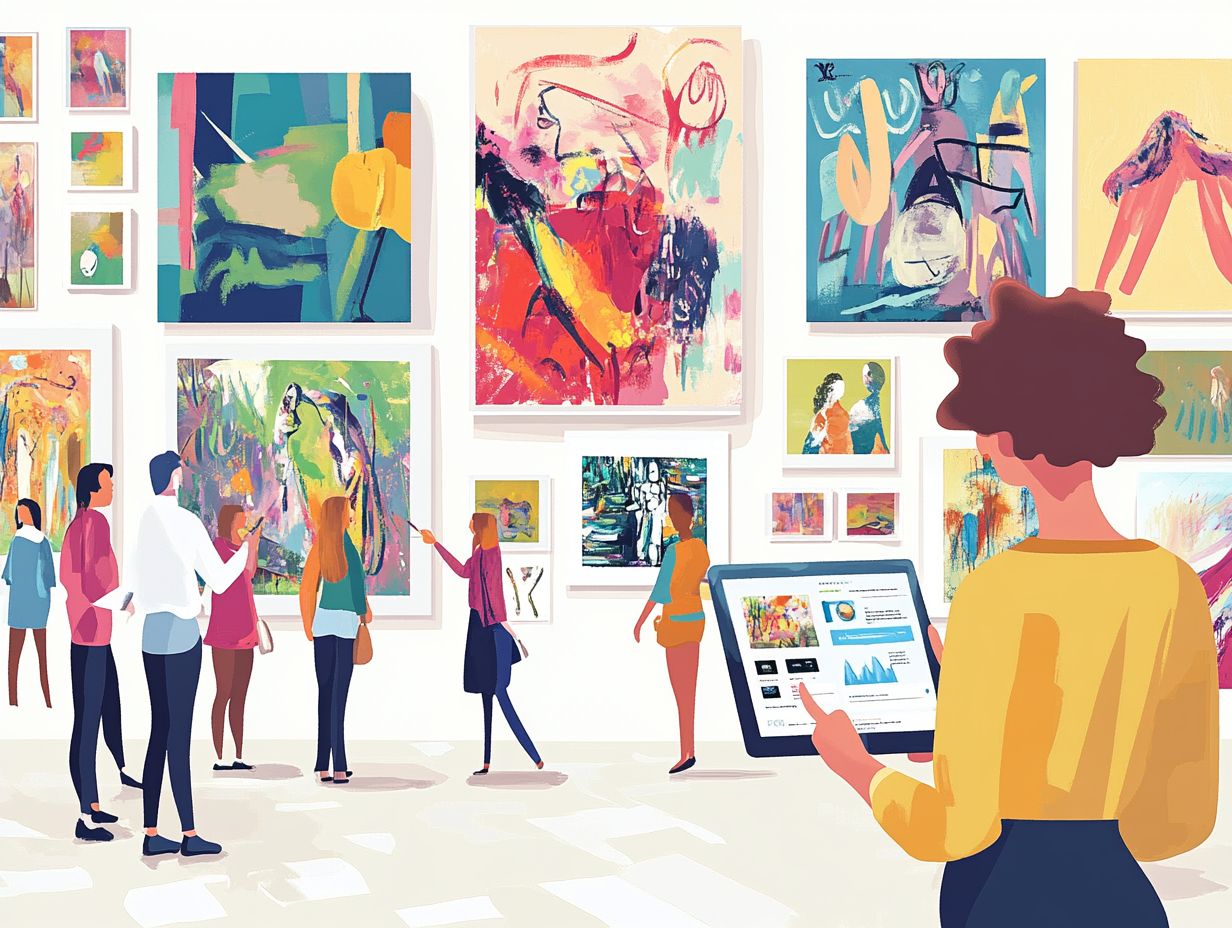62. The Benefits of CRM in the Arts and Culture Sector
In the dynamic realm of arts and culture, discover how CRM can transform your audience engagement and streamline your operations.
This exploration unveils ways CRM can revolutionize your ticketing and membership management while fostering deeper connections with donors and sponsors.
It also highlights essential considerations and challenges that arise when implementing CRM in this distinctive sector, along with inspiring case studies that demonstrate successful adoption.
Learn how CRM can elevate your organization to unprecedented heights.
Contents
- Key Takeaways:
- Benefits of CRM for Arts and Culture Organizations
- Implementing CRM in the Arts and Culture Sector
- Case Studies of Successful CRM Implementation
- Frequently Asked Questions
- What is CRM and how does it relate to the arts and culture sector?
- What are the benefits of implementing CRM in the arts and culture sector?
- Can CRM help with audience development in the arts and culture sector?
- Does implementing CRM require a lot of time and resources?
- How can CRM improve donor relations in the arts and culture sector?
- Are there any risks or challenges associated with implementing CRM in the arts and culture sector?
Key Takeaways:

- CRM improves audience engagement.
- Streamlined ticketing and membership management save time.
- Enhances donor relations, boosting donations.
What is CRM and Why is it Important?
CRM, or Customer Relationship Management, is a vital tool that enables you to enhance your organization, particularly within the arts and culture sector. It improves client relationships and streamlines operations.
By using CRM systems, you can effectively track client interests and manage sales opportunities. This leads to meaningful interactions that enhance customer satisfaction. CRM not only organizes your customer data but also helps segment patrons for targeted outreach and tailored marketing, driving engagement and revenue growth.
The importance of CRM extends to data security, which is crucial for safeguarding sensitive customer information. It allows you to create detailed customer profiles, helping you understand what your customers like.
Managing communications across various channels including email, social media, and direct messaging enables you to engage seamlessly with patrons, creating a more cohesive engagement strategy. By integrating these advanced features, CRM strengthens your connections with the audience and fosters long-term loyalty among supporters of the arts.
Benefits of CRM for Arts and Culture Organizations
Implementing a robust CRM system presents a wealth of advantages for arts and culture organizations, including enhanced audience engagement while streamlining operational efficiency.
With a CRM, galleries and museums can effortlessly manage sales, track client interactions, and filter contacts. This contributes to knowledge-based decision making and a boost in ticketing revenue.
Additionally, these systems also centralize donor information, a vital component for maximizing fundraising efforts and strengthening donor relationships.
Improved Audience Engagement
Improved audience engagement stands out as a significant advantage of implementing a CRM system within arts and culture organizations. By utilizing the role of CRM in the music industry, you can craft tailored communications that foster deeper connections with your patrons.
By utilizing tools like personalized emails and data analytics, you can analyze customer interactions and preferences. This leads to experiences that truly resonate with their interests.
With a well-implemented CRM, you can segment your audience based on demographic data, past behavior, and engagement patterns. This enables hyper-targeted outreach that speaks directly to individual tastes. Such personalization encourages repeat visits and enhances loyalty, making patrons feel recognized and valued.
Analytics provide invaluable insights into audience trends, allowing you to anticipate needs and create initiatives that genuinely engage the community. Ultimately, by leveraging these capabilities, you cultivate stronger relationships, enhancing overall customer satisfaction and nurturing a thriving cultural ecosystem.
Ready to transform your organization? Dive into the world of CRM today!
Efficient Ticketing and Membership Management

Efficient ticketing and membership management are essential for arts organizations. A well-implemented CRM system can truly transform these processes.
By using cloud services and e-commerce options, you can enhance your ticketing operations with an online calendar that makes booking a breeze for patrons. This ultimately boosts your ticketing revenue.
This innovative approach enables you to manage ticket sales effortlessly, providing patrons with a user-friendly interface for selecting events, completing payments, and receiving instant confirmations.
Integrating CRM tools like Salesforce or HubSpot allows you to gather valuable insights into customer behavior, enhancing the personalization of your marketing efforts.
By automating repetitive tasks, such as sending reminders for memberships or event renewals, you free up valuable staff time for more impactful engagement strategies.
The financial advantages of these efficiencies not only improve your cash flow but also nurture lasting relationships with patrons, encouraging repeat visits and fostering long-term loyalty.
Enhanced Donor and Sponsor Relations
Enhanced relationships with donors and sponsors are essential for the sustainability of arts organizations. CRM systems truly excel in managing this crucial aspect.
By keeping donor information in one place and implementing effective matching strategies, these systems help you nurture donor relationships and maximize your fundraising efforts in support of cultural heritage initiatives.
With their advanced data management capabilities, CRMs provide you with a comprehensive view of each donor s history, preferences, and potential for future contributions. This enables you to tailor your communication techniques, ensuring that your messages resonate personally and strengthen emotional connections.
The ability to analyze trends in donor behavior allows you to refine your matching strategies, fostering a more engaging partnership that not only values past support but also anticipates future generosity. This builds trust and loyalty among your supporters, driving sustained financial backing and enhancing your overall mission.
Implementing CRM in the Arts and Culture Sector
Implementing CRM systems in the arts opens up exciting possibilities for your organization. It is a strategic endeavor that demands meticulous consideration and planning to ensure maximum effectiveness.
You’ll need to navigate a range of challenges, from data migration to user training, all while making certain that the selected CRM aligns with your unique project management needs.
Support mobile access to ensure seamless operations, allowing you to stay connected and efficient, no matter where your work takes you.
Key Considerations and Challenges
When you’re implementing a CRM system in arts and culture organizations, you’ll need to navigate a range of challenges that can influence its effectiveness and usability. Key considerations include:
- Ensuring data security.
- Managing customer segmentation for targeted communications.
- Selecting the right integration solutions that fit seamlessly with your existing workflows.
To tackle these hurdles, prioritize robust cybersecurity measures like encryption and access controls to safeguard sensitive customer information from potential breaches.
Leveraging APIs and middleware will help you streamline data integration with your current business tools, enhancing your overall operational efficiency.
Effective customer segmentation hinges on employing analytics to uncover unique audience patterns and preferences. This allows you to craft tailored marketing strategies that truly resonate with each demographic segment.
By confronting these challenges head-on, you can create a more cohesive and secure CRM implementation that ultimately strengthens your relationships with your audience.
Case Studies of Successful CRM Implementation

Looking at case studies of successful CRM implementation reveals how these systems can transform your arts organization. Noteworthy examples illustrate how galleries have skillfully harnessed CRM tools to elevate donor relationships, enhance communication, and achieve remarkable revenue growth through strategic fundraising initiatives.
Real-life Examples and Results
Real-life examples of CRM outcomes in arts organizations illustrate the substantial advantages of adopting effective customer relationship management systems. Institutions like the High Museum of Art and the American Museum of Natural History have harnessed the power of data analysis to boost engagement, optimize fundraising efforts, and elevate patron experiences, highlighting the importance of CRM in membership organizations.
Take the San Francisco Museum of Modern Art, for instance. They implemented a comprehensive CRM approach to analyze visitor data, resulting in a remarkable 25% increase in membership renewals. By segmenting their audience based on interests, the museum crafted communications that resonated deeply with various demographics.
Similarly, the Walt Disney Concert Hall utilized CRM systems to refine ticket sales and manage customer inquiries, achieving a 30% surge in online ticket purchases. These organizations have enhanced their outreach through targeted campaigns and cultivated personalized experiences that foster loyalty and forge deeper connections with their audiences.
Frequently Asked Questions
What is CRM and how does it relate to the arts and culture sector?
CRM stands for Customer Relationship Management, which is a strategy used by businesses to manage interactions with their customers. In the arts and culture sector, it can be used to manage relationships with patrons, donors, and community members.
What are the benefits of implementing CRM in the arts and culture sector?

- Better communication with patrons
- Increased donor retention
- More efficient fundraising efforts
- A better understanding of audience demographics and preferences
Can CRM help with audience development in the arts and culture sector?
Yes, CRM can be a powerful tool for audience development. By tracking data and analyzing audience behavior, organizations can better target marketing efforts and create personalized experiences for patrons.
Does implementing CRM require a lot of time and resources?
Implementing a CRM system does require an initial investment of time and resources, but the benefits can far outweigh the costs. With automation and streamlined processes, organizations can save time and resources in the long run.
How can CRM improve donor relations in the arts and culture sector?
CRM can enhance donor relations by providing a central database for donor information, allowing for personalized communication and tracking of donor engagement and giving history.
Are there any risks or challenges associated with implementing CRM in the arts and culture sector?
As with any new system or strategy, there can be risks and challenges. These may include data privacy concerns, resistance to change, and the need for proper training and support for staff members.
If you’re interested in exploring CRM options or need assistance, feel free to contact us for help!






